At Trak we know that it is not easy to carry out a good rehabilitation of the quadriceps muscle and to follow up the patient with exercises that can be performed at home, especially when facing a complex pathology.
Often patients come to our clinics with atrophies resulting from post-surgical immobilization or altered gait patterns that evidence an underlying pathology in the quadriceps. We must advise and guide them not only with the treatment we perform in the treatment room, but also with exercises that guarantee the patient’s progression and help us to carry out a complete rehabilitation plan for the quadriceps femoris muscle.
As professionals, we must not forget the different structures that can be related to the muscle we are dealing with and that are not necessarily part of the quadriceps femoris muscle, such as the ACL, PCL, hamstrings or collateral ligaments. To this end, we are going to talk about 5 strength exercises that will serve as the basis for developing our quadriceps rehabilitation protocol at home for the patient.
Quadriceps strengthening: exercises at home
Performing an exercise protocol is not an easy task, especially when it must be adapted to the pathology and condition of the patient. Therefore, to make the task easier, we leave you some examples of exercises to strengthen the quadriceps at home and have well protected the knee joint.
We recommend the use of resistance bands (also called elastic bands) so that your patients get the most out of the exercise. Working the quadriceps with elastic bands is an easy and economical way for them to do controlled strength work.
Knee end extension with lying towel roll:
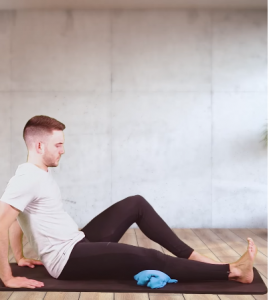
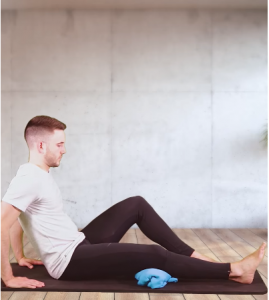
Starting position: patient in the supine or semi-Fowler position, a depressible object is introduced into the popliteal fossa and the patient is asked to sink it.
In this exercise we work integrally the quadriceps – lateral vastus, vastus medialis and rectus femoris, emphasizing the action of the vastus medialis that works in the last degrees of extension.
Seated knee extension without rubber band:

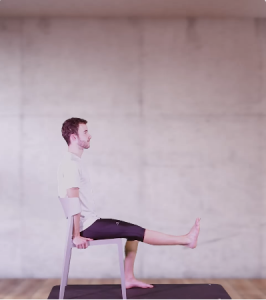
The exercise begins with the patient seated in a comfortable position, with the knee at 90 degrees of flexion. A knee extension is requested.
It is interesting to practice isometrics in this case, when the last degrees of extension are reached. We can also consider the application of a weight.
Seated knee extension with rubber band:
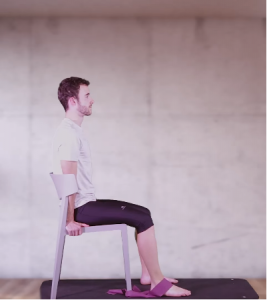
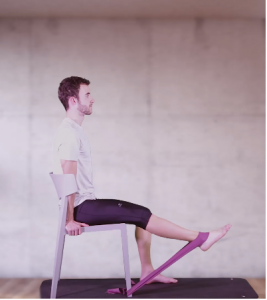
To prepare for this exercise, we anchor the ends of the elastic band to a fixed point and wrap the patient’s ankle so that when the knee is extended the band exerts a resistance to muscle contraction.
It is recommended to practice the eccentric exercise taking advantage of the elasticity of the rubber band to help the patient strengthen the quadriceps tendon.
Straight leg raising and lowering:

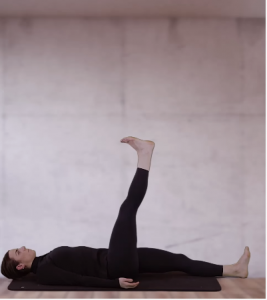
The patient is placed in the supine position and we ask him/her to perform a hip flexion.
In this exercise, although there is a complete activation of the quadriceps, a more specific activation of the rectus femoris is sought – remember that since it originates in the iliac spine it is also a hip flexor.
Observe if the patient can perform the exercise in the full range of motion and evaluate the use of an elastic band to perform eccentrics or isometrics.
Isometric wall squat:

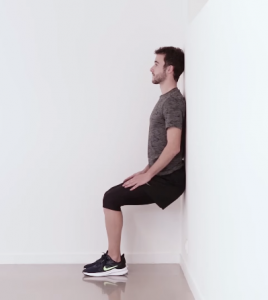
We take a standing position as the initial position, using the wall as a support to keep the back straight. We ask the patient to perform a squat without exceeding 90º and to hold for 10 seconds.
Although the exercise is complete at 90º, in this case it would be interesting to adjust the flexion degrees according to the patient’s capabilities.
In all exercises starting from a seated or supine position, the patient should be asked to perform a dorsal flexion of the ankle to promote the activation of the anterior chain.
Quadriceps femoris strength training
Strength training has been refuted in recent years by scientific evidence as one of the most beneficial in all age ranges. Reputable scientists such as Stricker present it as the best way to combat childhood obesity and Fragala as the best medicine against sarcopenia in the elderly. If we talk about pathology, when performing a quick search in any of the most common article search engines like PubMed o Cochrane, we will observe that the most studied is the anterior cruciate ligament (ACL) pathology.
Trak, telerehabilitation software
The most complicated aspect of monitoring a remote exercise protocol is the patient’s adherence to treatment.
Taking into account the importance of therapeutic exercise in the rehabilitation process, new tools are needed to help the healthcare professional to correctly monitor the patient’s evolution.
This is possible with Trak, the new telerehabilitation tool that helps you to obtain greater clinical performance and to grow your business by improving adherence to your treatments by 70%.
Join the digital rehabilitation, if you want to book a video call to learn about the product, you can schedule a meeting at this link.